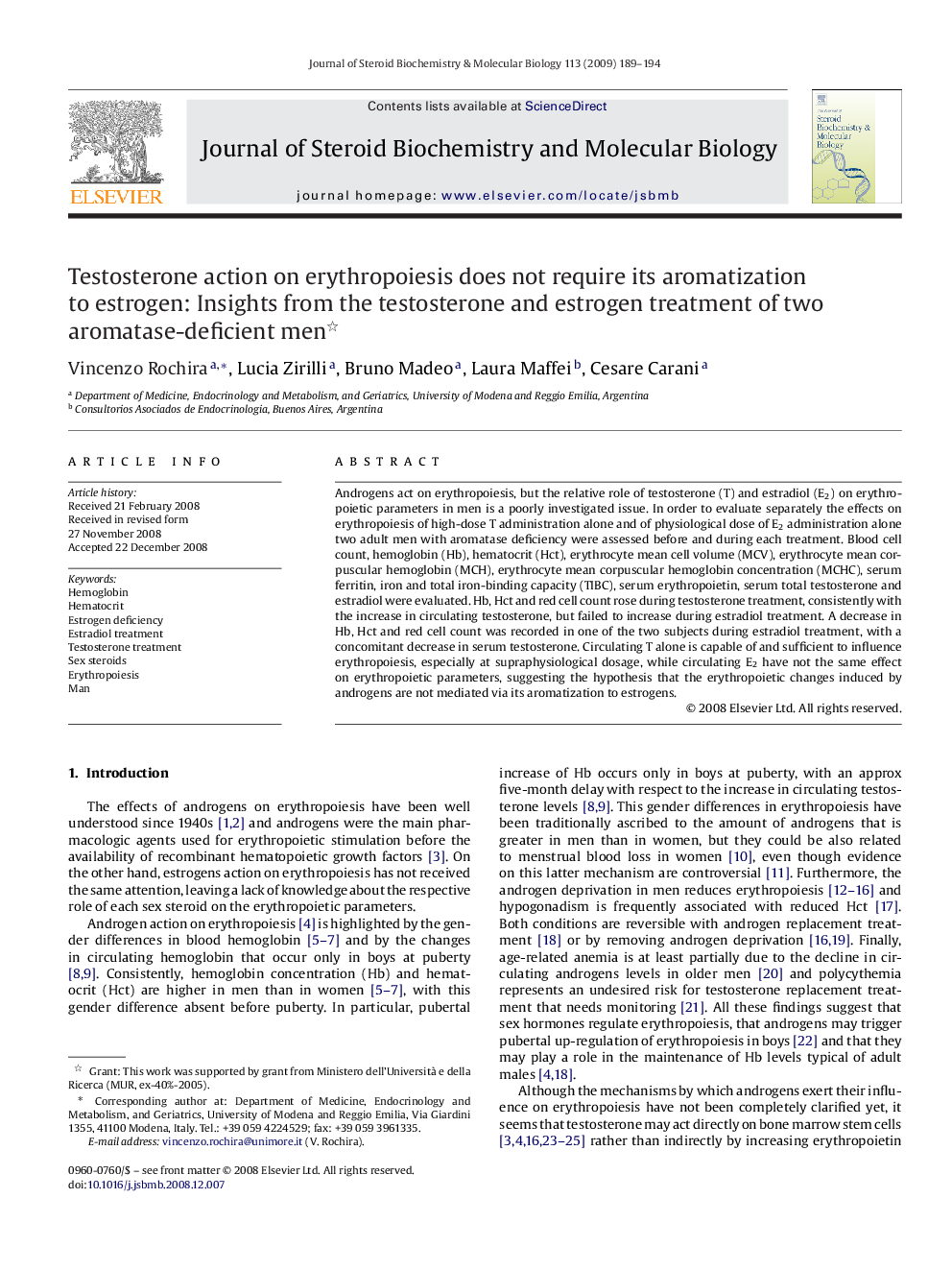| Article ID | Journal | Published Year | Pages | File Type |
|---|---|---|---|---|
| 1991906 | The Journal of Steroid Biochemistry and Molecular Biology | 2009 | 6 Pages |
Androgens act on erythropoiesis, but the relative role of testosterone (T) and estradiol (E2) on erythropoietic parameters in men is a poorly investigated issue. In order to evaluate separately the effects on erythropoiesis of high-dose T administration alone and of physiological dose of E2 administration alone two adult men with aromatase deficiency were assessed before and during each treatment. Blood cell count, hemoglobin (Hb), hematocrit (Hct), erythrocyte mean cell volume (MCV), erythrocyte mean corpuscular hemoglobin (MCH), erythrocyte mean corpuscular hemoglobin concentration (MCHC), serum ferritin, iron and total iron-binding capacity (TIBC), serum erythropoietin, serum total testosterone and estradiol were evaluated. Hb, Hct and red cell count rose during testosterone treatment, consistently with the increase in circulating testosterone, but failed to increase during estradiol treatment. A decrease in Hb, Hct and red cell count was recorded in one of the two subjects during estradiol treatment, with a concomitant decrease in serum testosterone. Circulating T alone is capable of and sufficient to influence erythropoiesis, especially at supraphysiological dosage, while circulating E2 have not the same effect on erythropoietic parameters, suggesting the hypothesis that the erythropoietic changes induced by androgens are not mediated via its aromatization to estrogens.
